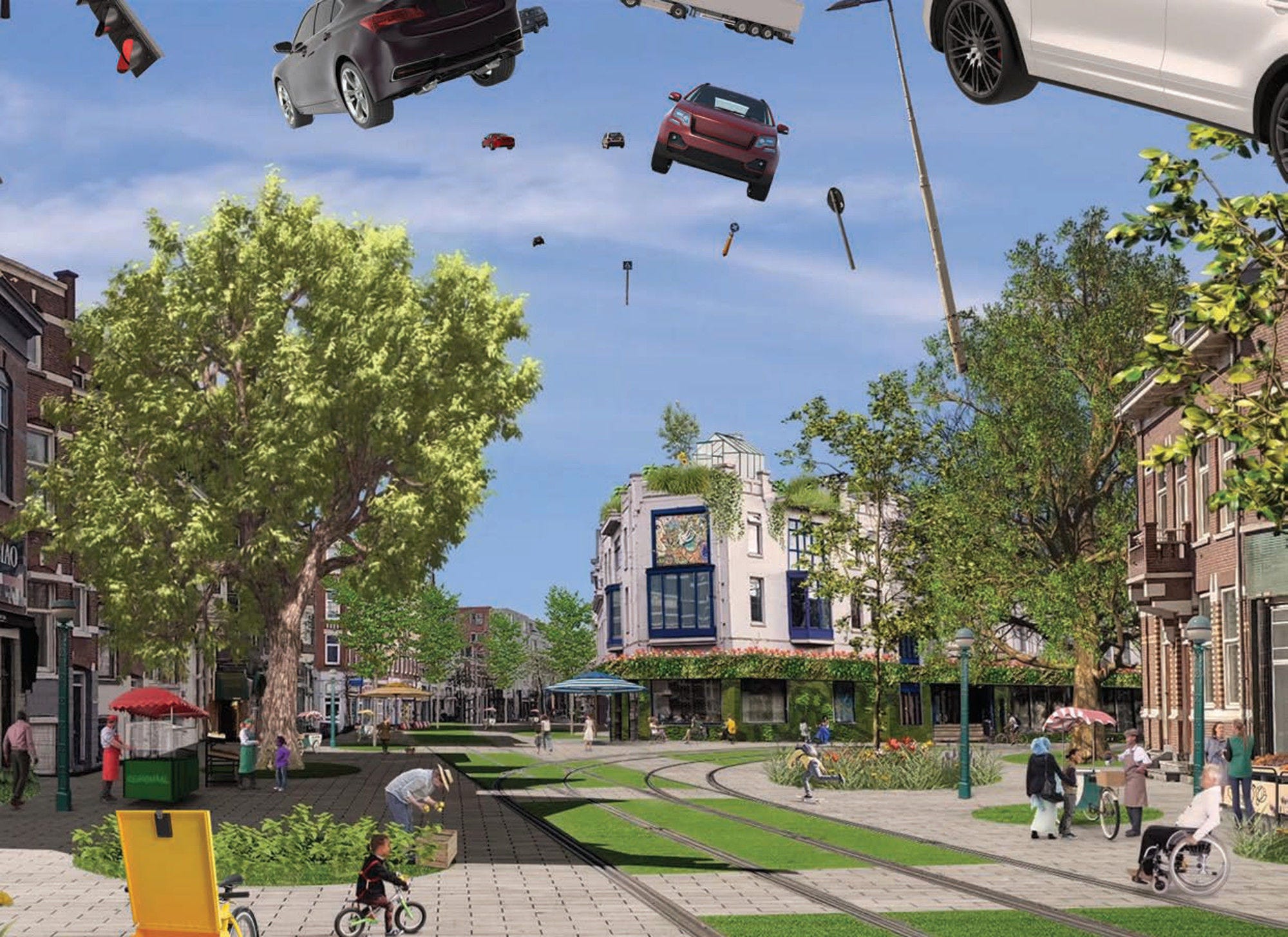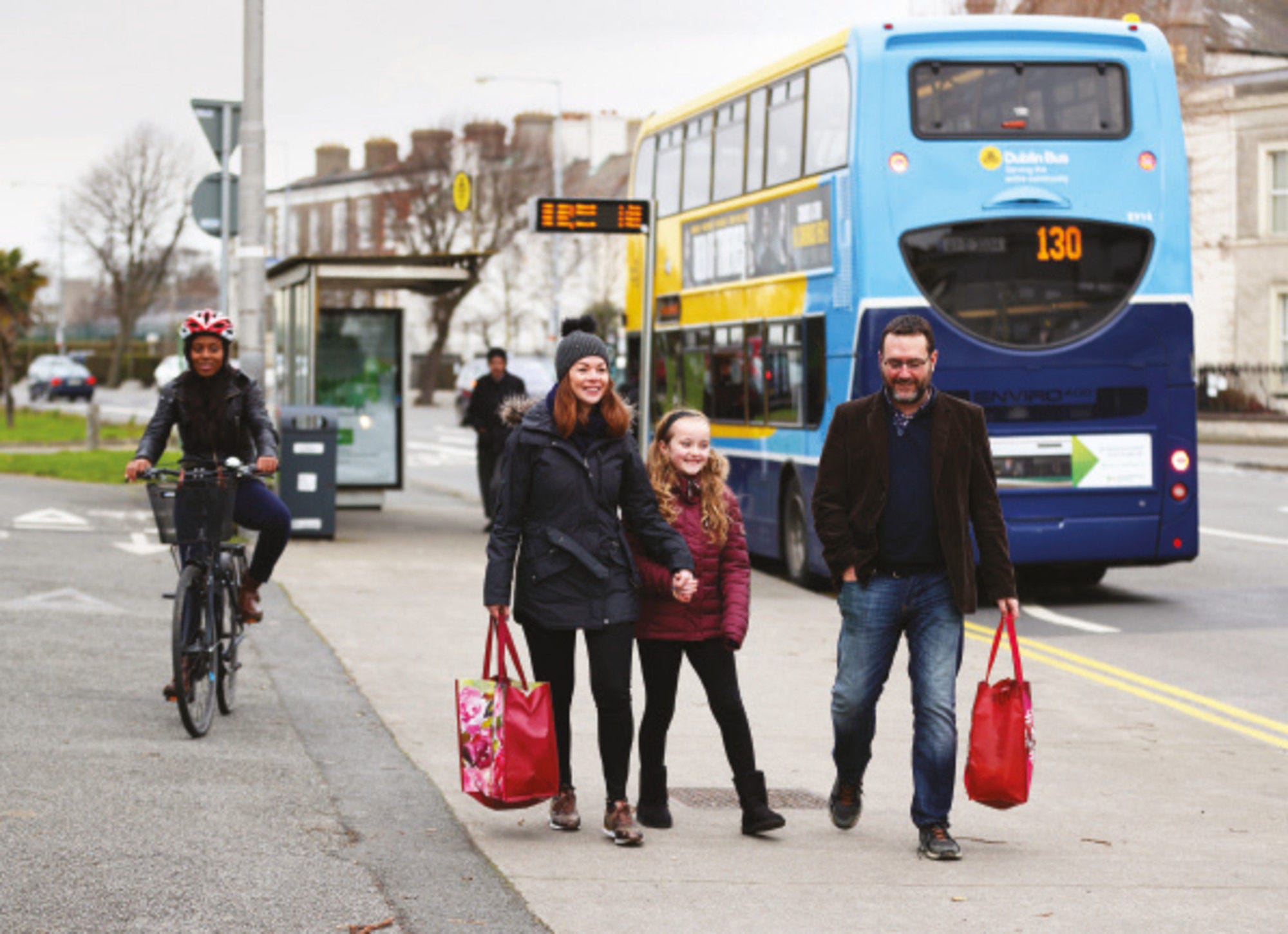Efforts that primarily focus on incremental change in systems that are unsustainable by design are one of the main barriers to scaling up climate action. This report applies the OECD well-being lens process to the transport sector. It builds on the report Accelerating Climate Action and encourages countries to focus climate action on delivering systems that - by design - improve well-being while requiring less energy and materials, and thus producing less emissions. The report identifies three dynamics at the source of car dependency and high emissions: induced demand, urban sprawl and the erosion of active and shared transport modes. The report also provides policy recommendations to reverse such dynamics and reduce emissions while improving well-being, from radical street redesign, to spatial planning aimed at increasing proximity, and policies to mainstream shared mobility. Analysis also shows why the effectiveness and public acceptability of carbon pricing and policies incentivising vehicle electrification can significantly increase after policy reprioritisation towards systems redesign.
Transport Strategies for Net-Zero Systems by Design

Abstract
Executive Summary
An important limitation for scaling up climate change mitigation is that efforts all too often aim at optimising individual components within our economic and social systems rather than transforming the systems themselves, which are unsustainable by design. IPCC scenarios indicate that focusing on policies that transform systems so that- in their functioning, or by design-, they improve well-being, while requiring less energy and materials, and produce less emissions can be more effective to achieve net-zero goals on time.
System redesign has rarely been the focus of climate action. In the case of transport, for decades, CO2 emission mitigation action has mainly focused on optimising vehicles’ emission performances (a component) in car-dependent urban and transport systems.
The OECD Well-being lens process can help policymakers reprioritise climate action towards system redesign and accelerate the transition towards net-zero systems. The process builds on systems thinking and consists of three steps: i) envision the outcomes a well-functioning system achieves; ii) understand why the current systems’ functioning is not achieving such outcomes and how it could be designed to lead to better results; and iii) redesign the system via policies packages focused on reversing unsustainable dynamics to transition towards better functioning systems.
The Well-being lens process triggers two mind-set shifts, that are needed to meet net-zero targets on time: i) from means (e.g. GDP) to ends (well-being); and ii) from parts (e.g. vehicles) to systems functioning (e.g. car-dependency). The first shift allows envisioning an increase in well-being (health, equity, etc.) through low-demand systems (rather than considering high demand as a condition for high life quality). For policy-making, this means that managing or reducing demand becomes a central policy lever. The second shift sheds light on the importance of understanding the systems’ dynamics driving unsustainable results. For policy-making, this means focusing climate action on reversing such dynamics and redesigning systems.
The rest of this summary describes the results from applying the Well-being lens process to the passenger surface transport sector, with a focus on urban areas and their commuting zones.
Envision the systems that we need
Well-functioning transport systems allow people the possibility of accessing places with ease (accessibility) in a sustainable and healthy manner. In these systems, people walk, cycle and use micro-mobility for the majority of their trips, and high emitting and space-intensive modes (e.g. automobiles) are used for less frequent trips. These systems are characterised by: i) proximity between people and places; and ii) investment and public space allocation to sustainable modes of transport so that these are the convenient modes, and thus people choose them. By their design, these systems can yield low mobility and emissions, more equitable and safe access to opportunities and healthier lifestyles.
In contrast, in current transport systems many people use motorised vehicles for the majority of their trips. These choices are determined by: i) long distances between people and places, and ii) the allocation of public space and investment to private motorised vehicles (cars, motorbikes); thus increasing their convenience and the number of people that choose them. These systems result in high mobility and emissions, coupled with unequal and unsafe access to opportunities and unhealthy lifestyles.
Understand the systems we have
The choice to drive a car or a motorbike is not solely the result of people’s individual preferences (i.e. exogenous to the system) as is often argued. Such choice is determined largely by transport and urban systems organised around car driving, which leads to induced demand, urban sprawl, and the erosion of shared and active modes of transport. These three dynamics are at the source of high emissions and a number of negative impacts on people’s wellbeing, such as air and noise pollution, congestion, road injuries and fatalities, reduced travel options and unequal access to opportunities.
The systems we create are a result of what we do, which is in turn determined by what we measure and the mental models that “filter” what we see. For decades, transport policies have focused on supporting mobility (erroneously conflated with well-being) instead of accessibility, which is the combination of mobility and proximity. A mobility focus has led to reducing proximity, which mobility-oriented policies compensate with yet more mobility, locking territories into unsustainable dynamics. An analytical, rather than systemic, mind-set has also reduced the problem to identifying the part in the system (e.g. combustion cars), causing the undesired result.
Mobility-oriented and analytical mind-sets translate into decoupling strategies, which focus on improving or replacing (mainly private) combustion engine vehicles. Meanwhile efforts to reduce the number of vehicles, the distances travelled, or car use, are perceived as going against people’s freedom and well-being; thus, if undertaken, efforts are kept at the margin of climate strategies
Redesign our systems by changing policy priorities
Policies with the potential to transform the system’s functioning include the following.
Street redesign and improved management of public space can reverse induced demand by reallocating public space and investment to low carbon and space efficient modes, and balancing space use between transport and other uses; leading instead to disappearing traffic. Barcelona’s Superblocks are an example of street redesign and reallocation planned to transform the whole of the Barcelona Municipality.
Spatial planning aimed at increasing proximity can reverse urban sprawl. Urban development and renewal strategies guided by accessibility principles could allow urban areas and their hinterlands to become networks of 15-minute cities in which people can move across the territory, but no longer need to travel long distances to meet their everyday needs. This requires changes in governance, planning and regulation.
Policies to mainstream shared mobility are fundamental to accelerating the development of sustainable transport networks. Strengthening public transport networks is key to avoid the often-observed public transport low-cost, low-revenue, low-quality trap. In parallel, support to mainstream shared bicycles and micro-mobility, and the expansion of on-demand micro-transit services is key to make these modes convenient options for daily trips.
Numerous synergies exist between the policies described above, market-based instruments and incentives to improve vehicle technologies, the efficiency and feasibility of which can significantly increase after policy reprioritisation towards systems redesign.



